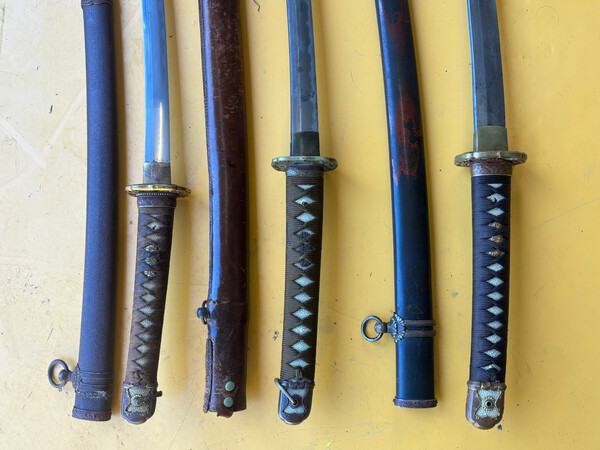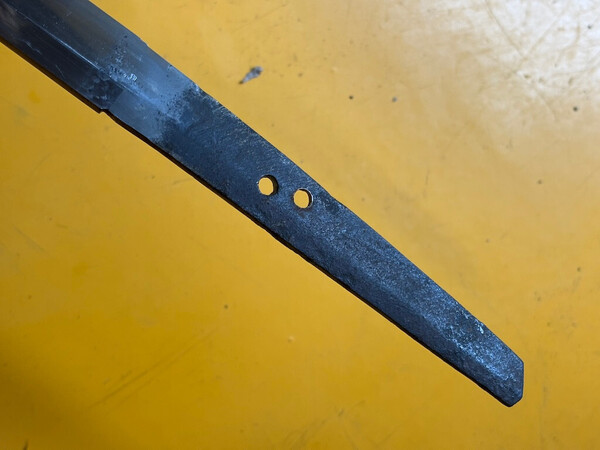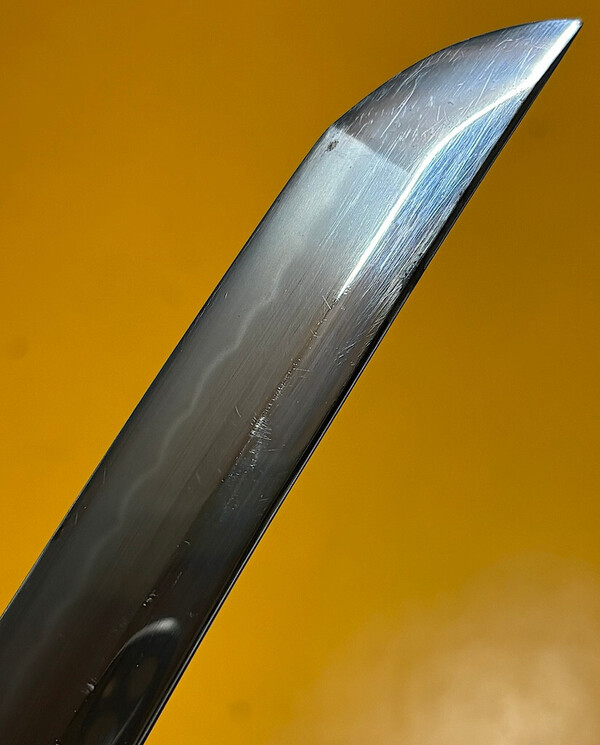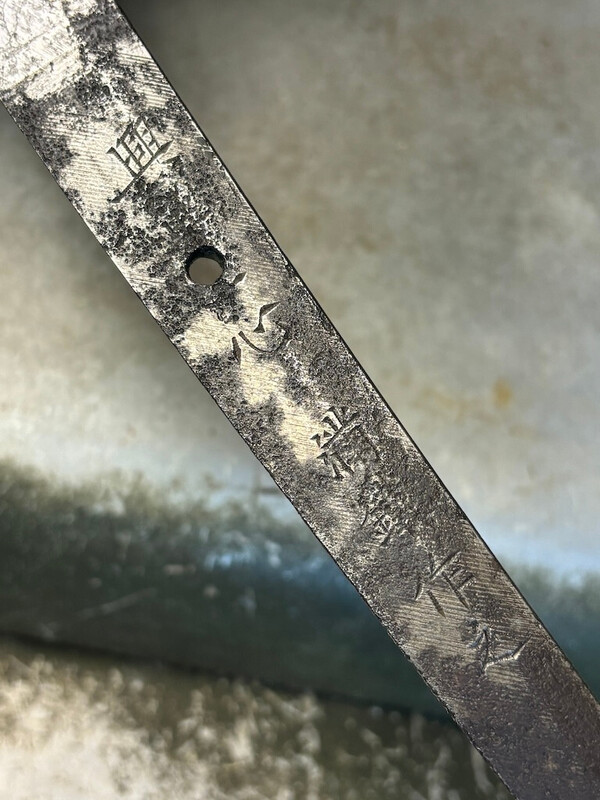-
Posts
99 -
Joined
-
Last visited
Everything posted by Fusilier
-
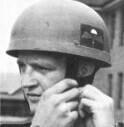
Recently Purchased Collection of 3 Gunto
Fusilier replied to Fusilier's topic in Translation Assistance
-

Recently Purchased Collection of 3 Gunto
Fusilier replied to Fusilier's topic in Translation Assistance
Cheers Bruce, Answering your questions in reverse order; the sword with the 'sho' stamp is the one I've called No.2 here and that Jan has attributed to 氏房 Ujifusa. In the photographs at the top of the second post in this thread, where I've photographed the three swords together, its the longest of the three and at the top of the first two images in that post. As for photo's of the Mumei sword here are some pictures of the mid section, I'll get some pics of the tip when my two year olds birthday party is done. Anyone who wants to experience real chaos just needs to spend a few minutes in my house this morning !! All the best David -

Recently Purchased Collection of 3 Gunto
Fusilier replied to Fusilier's topic in Translation Assistance
Thanks you very much Jan, most grateful for that. -

Recently Purchased Collection of 3 Gunto
Fusilier replied to Fusilier's topic in Translation Assistance
-

Recently Purchased Collection of 3 Gunto
Fusilier replied to Fusilier's topic in Translation Assistance
This is the Nakago of the 2nd Sword, with the 'Sho' Stamp. Any translation assistance would be most gratefully received. -

Recently Purchased Collection of 3 Gunto
Fusilier replied to Fusilier's topic in Translation Assistance
As mentioned, I've now photographed all three swords and pictures are attached below. I'd still be interested if anyone has an opinion on the age of the first sword , pictures of which are in the first post above. The other two swords, both appear to be Showa era Shin Gunto and both display stamps, one a 'seki' stamp and the other a 'sho' stamp. I'd be very grateful for any assistance translating the inscriptions and identifying the smiths. First off then, pictures of the 3 swords: -
G'day All, I've just purchased a collection of 3 swords, acquired in WW2, for re-sale and while I'll share pictures of all three when the kids give me more than 5 mins to photograph them, one of them has sparked my curiosity. It's mumei and the condition and profile of the Nakago made me think it might not be a shin gunto. Is it older or something else? Grateful for any insights. I'll get pictures of the other two this weekend. Cheers David
-

WW2 Japanese M1930 Type 90 Service Cap
Fusilier replied to Fusilier's topic in Translation Assistance
Thank you -

WW2 Japanese M1930 Type 90 Service Cap
Fusilier replied to Fusilier's topic in Translation Assistance
Thank you Moriyama San, would that be the soldiers name do you think? -
G'day, I know that this isn't a Gunto but I was wondering if anyone could help me translate the mei on the lining of this Type 90 Service Dress Cap. I assume its a name, although I'm unsure of whether its the maker or the owner. Any information would be gratefully received, images attached. Cheers David
-
G'day, I recently purchased this gunto for resale. When I first saw it I thought the hamon was unusual and the blade was distinct from many I've seen in that appeared a bit more 'refined' if that is the right word. I was wondering whether its possible to determine the quality of the blade just by looking at images of the blade and the hamon or whether that is only possible if you can physically examine the sword. I've checked to see if there are any of the 'seki' like stamps often found on showa-to blades, that Bruce's outstanding online article covers, and I can't see any. I'd also appreciate a translation of the mei and any information anyone may have on the smith. Cheers David
-

Description doesn't match the Blade.
Fusilier replied to Fusilier's topic in General Nihonto Related Discussion
Cheers Peter, I know what you mean, when I first saw it, it wasn't like any I'd seen before. The patination appears consistent across the nakago so I'd assess it was produced like that. As you say, just odd. -

Description doesn't match the Blade.
Fusilier replied to Fusilier's topic in General Nihonto Related Discussion
Out of curiosity Bruce, what was the defining factor in determining the length of the nakago. Hand size, blade balance, or was it just a random thing? -

Description doesn't match the Blade.
Fusilier replied to Fusilier's topic in General Nihonto Related Discussion
I agree Eric, I think the previous seller may have taken the swords description from another sword. The link to Padman maybe a coincidence but there are a number of elements to the story (the name, officer status and the link to 2/2 MG Regt) that do have an element of truth. It's far more likely that Lt Padman (not Capt), who had an important role but undistinguished war, acquired the sword when the Japanese surrendered in North Borneo. Impossible to know now for sure but that said, I'm grateful to all of you once again for confirming my suspicions. -

Description doesn't match the Blade.
Fusilier replied to Fusilier's topic in General Nihonto Related Discussion
Cheers Jan, That's pretty definitive. -
G'day guys, I recently purchased this sword for re-sale and it came with the attached plastic laminated sheet that the seller told me he'd been given by the bloke he purchased it. The document says the sword was forged by a smith named Ishihara Kanenoa circa 1596 and that it had been aquired by an Australian Officer called Captain Les Padmen who it says served with 2/2 Tank Attack Regt at Buna in New Guinea during WW2. A couple of things ring alarm bells on that story for me, firstly the Seki Stamp on the Nakago and the style of the characters look Showato to me. Secondly, having done a namesearch for a Capt Les Padmen, the only Padman I could find that may have been our man is a Lieutenant (PADMAN LESLIE ROBERT : Service Number - W70413 : Date of birth - 01 Feb 1925 : Place of birth - DONNYBROOK WA) who served for most of the war with the Anti Aircraft Search Light unit in Darwin and who deployed to North Borneo at the end of the War. As far as I know, there never was a 2/2 Tank Attack or even Anti Tank Regt. He was attached for a short period to 2/2 MG Bn but was never a Captain and from what I could see, never deployed to New Guinea or Buna. Any light, anyone can shed on any of this would be much appreciated, I'll attach some pictures. Cheers David
-
G'day Guy's, As usual, your assistance is hugely appreciated and also as usual I have learnt a great deal about something I knew very little about. Bruce and Team Mantetsu's article was really fascinating, thank you. Cheers David
-
I hope this is what you and Bruce were after, is this the number? its all I could see on the nakago mune.
-
-
Thanks Mate, Bruce Pennington's article on these swords is brilliant.
-
G'day All, Some years ago I purchased a collection from a retired New South Wales Police inspector. It consisted of a few really nice NSWC marked pieces, including a Martini Henry Rifle and a Pattern 1886 Cavalry Sword. There were also a couple of Japanese swords (a Type 32 'Ko' and this WW2 Showa era tachi) and a quantity of bayonets. All were correctly labelled and they included this sword which was labelled as an 'Unmarked WW2 Japanese Officers Sword'. I didn't check that that was an accurate description at the time, I only remember thinking that it was a more robust sword than many of those I had come across at that point and stored it away. This weekend as I was sorting through a few boxes to see if there was anything in them I wanted to list on eBay in the run up to Christmas I came across it and thought I might just give it the onece over. I was surprised to discover it wasn't the Mumei example I thought it was as you'll see from the attached pictures. Any assistance anyone can give me in translating the mei on both sides of the nakago would be very much appreciated.
-

Gunto, Tag and Unexpected Iron Daisho Tsuba Set
Fusilier replied to Fusilier's topic in Translation Assistance
Thanks Jean Collin, That makes sense. -

Gunto, Tag and Unexpected Iron Daisho Tsuba Set
Fusilier replied to Fusilier's topic in Translation Assistance
I'm incredibly grateful always for Jan's help, I was actually referring to his question about the translation of Minagawa's given name and whether you had a view on whether it was Yoshinori or Nobunori? There was certainly no question of Jan's reliability as a translator and if I've given you that impression, it was inadvertent on my part. Cheers David -

Gunto, Tag and Unexpected Iron Daisho Tsuba Set
Fusilier replied to Fusilier's topic in Translation Assistance
Thanks Jan, Great info, on the name, I once called one of these tags a 'surrender tag' and was mildly scolded for doing so, is it now the accepted name for these things? Cheers David -

Gunto, Tag and Unexpected Iron Daisho Tsuba Set
Fusilier replied to Fusilier's topic in Translation Assistance
Thank you Moriyama San, Are you able to confirm Jan's translation of the original owners name: 皆川喜德 = Minagawa [not sure how to read the given name, could be Yoshinori or Nobunori] ? Cheers David














